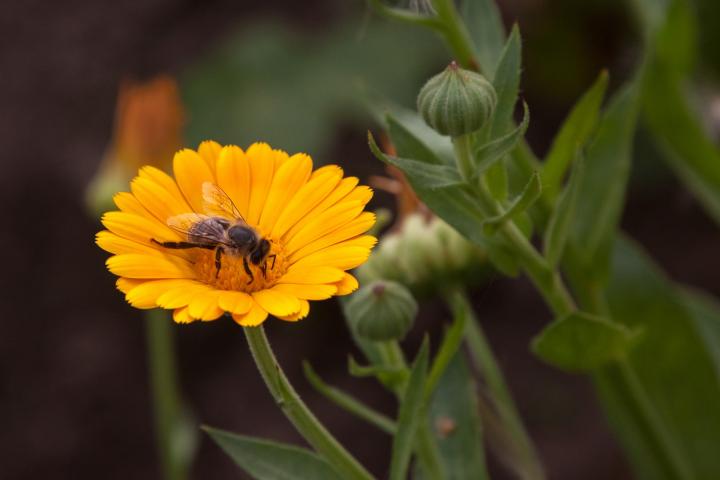10 Simple Steps to Creating a Bee Friendly Garden
10 Simple Steps to Creating a Bee Friendly Garden
A bee friendly garden is a family friendly garden. How so you may say? Well it is estimated that 78% of flowering plants rely on bees and other insects to reproduce. Worldwide, of the 100 crop species that provide 90% of the world’s food, over 70 are pollinated by bees. A world without bees will therefore be an impoverished and hungry world. Not a great future for children.
Plants for a Bee Friendly Garden
Particularly in cities gardens, play an important part of the green framework. Bees need to eat two things from your garden: pollen and nectar. By filling your garden with native plants such as honeysuckle, wild roses, lavender, foxgloves, hollyhocks, clematis and hydrangeas you can create a lovely diet for bees. Lots of herbs attract bees. If you visit any herb garden you will see and hear it positively buzzing. Borage is a great herb for feeding honey bees.
- Plant the right plants: bees like certain plants better than others. Cornflowers, sunflowers and a good garden wild flower mixture are also popular with bees, and they are also partial to poppies and flowering fruit trees
- If possible and you have enough space plant plants in groups so that it is easy for bees to collect pollen and nectar efficiently.
- Avoid plants with double heads and multi-petaled flowers as they often do not have pollen and nectar. Where they do have food bees may have difficulty gaining access to it.
- Also plant flowering shrubs and fruit trees.
- Don’t forget about your front garden and window boxes they can be bee friendly as well
- Never use pesticides on flowers and only use organic, non-toxic pesticides in your garden. Better still try gardening organically.
- Have as many flowers for as long as possible in your garden. Deadhead all your flowers regularly as this will encourage more flowers and hence more food for the bees.
- Plant so you have flowers throughout the year from early flowering crocuses to autumn flowering asters.
- Put up or make a solitary bee nesting box, though I have just seen a statistic that only 3% of these are occupied and you may be better to concentrate all your efforts on planting.
- If they come inside the house – encourage them they are not pests so please do not kill them.
Lavender
Lavatera
Catmint
Basil
Rosemary
Thyme
Poppy
Crocus
Pulmonaria
Dahlia
Bellflower
Apple Tree Blossom
Scabious
Aster
Raspberry
Currant
Mahonia
Berberis
Raspberry
Currant
Mahonia
Berberis





Comments
Post a Comment